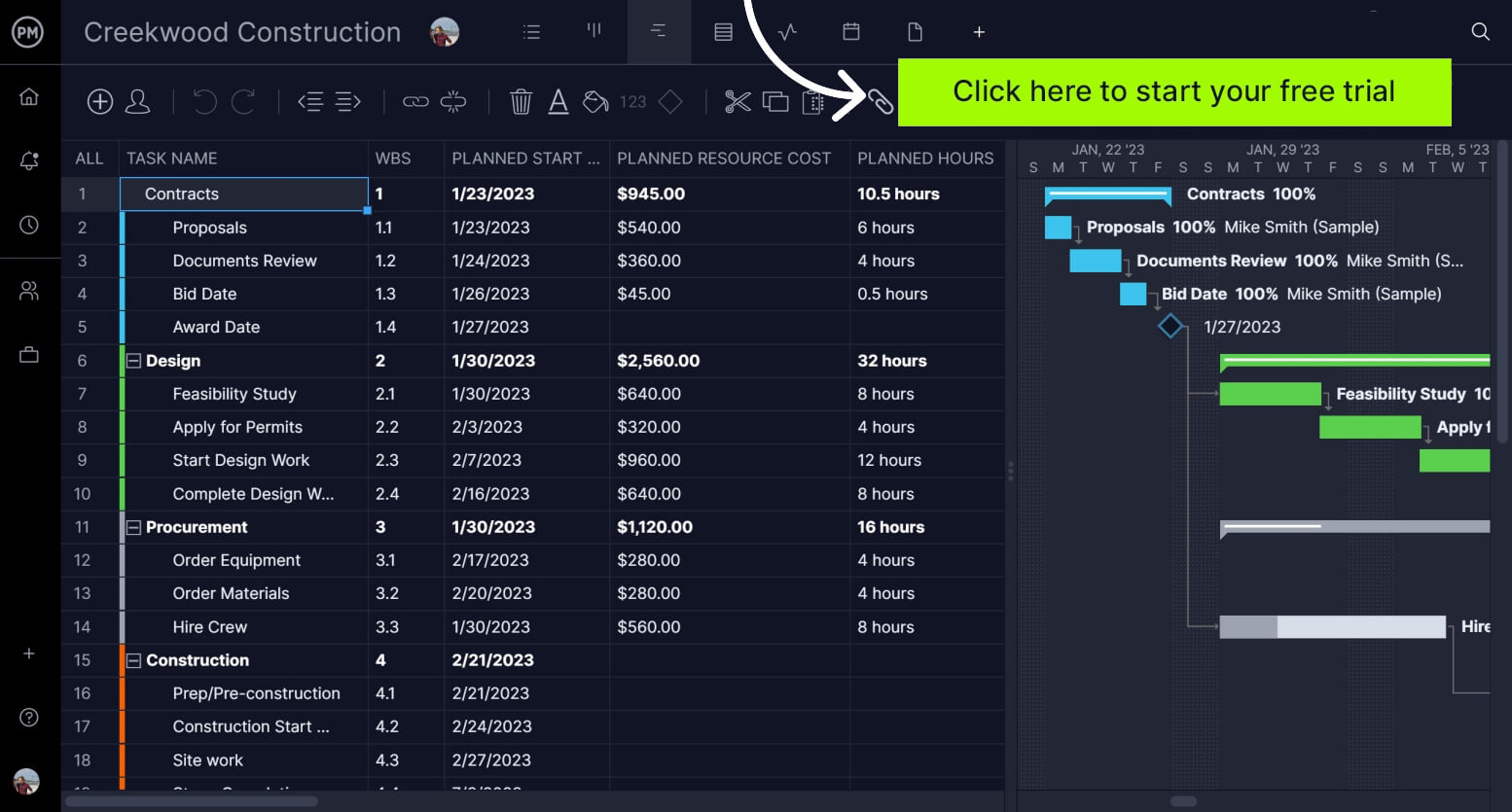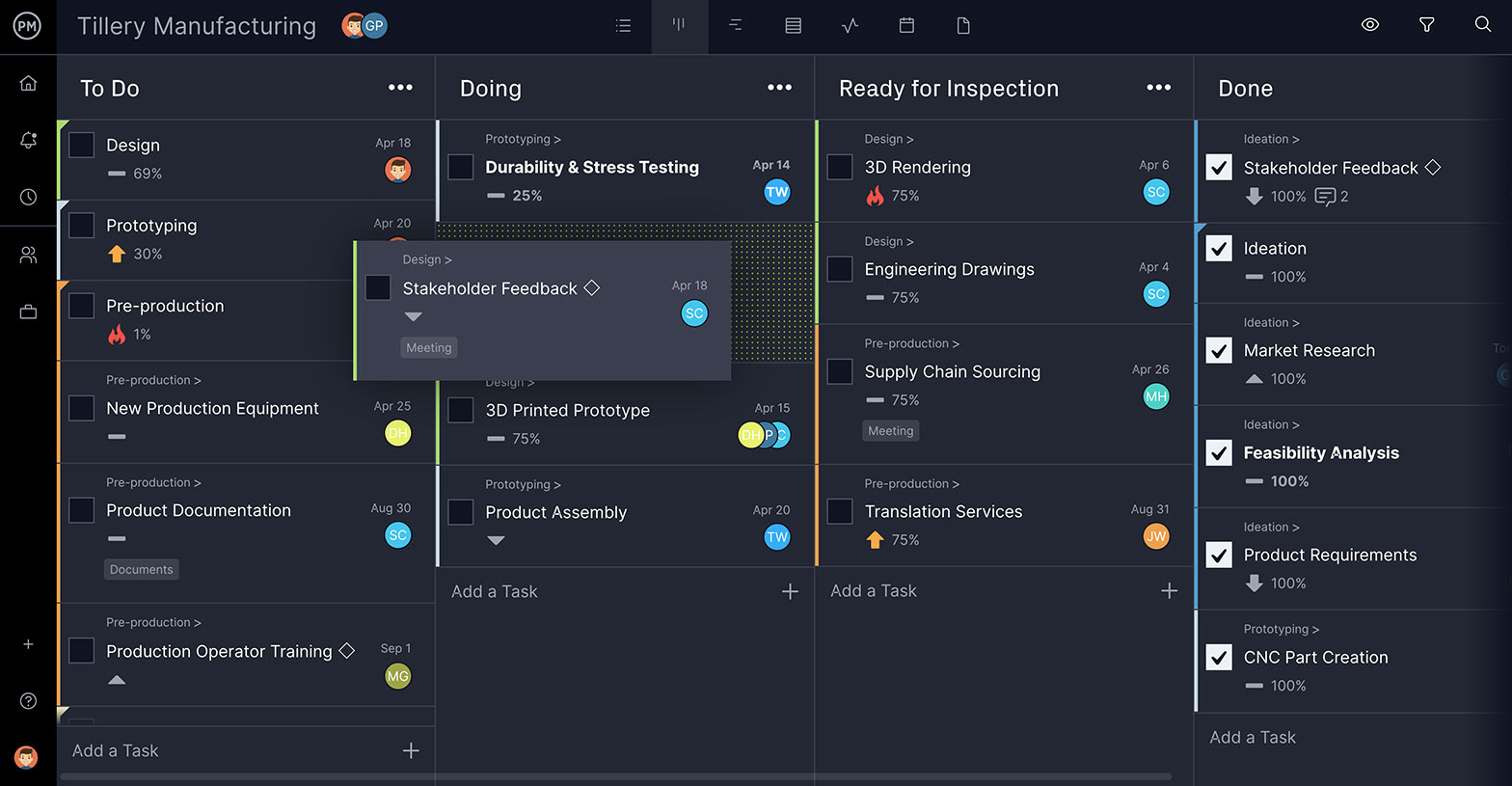When you’re making a product, how do you ensure that all the desired capabilities are included in the final deliverable? That’s why a project requirements document (PRD) is so important. It communicates this information to everyone on the product team.
But what exactly is a product requirements document and what needs to be included in one for it to be effective? We’ll show you how to make one so that when you’re planning your next product, the final deliverable has everything you planned to put in it.
What Is a Product Requirements Document (PRD)?
A product requirements document (PRD) is a detailed outline of all product requirements. It explains the value of the product as well as its purpose or feature. The product manager is responsible for creating the product requirements document to communicate to the product team and stakeholders.
Details include what the project is building, who that product is for and how it will benefit the end user. The structure of the product requirements document is top-down; it starts with the big picture, providing an overall vision of what’s to be accomplished. Product goals are then tied in with the features that achieve that vision. There are also details on how end users will engage with the product and what it will look like.
Traditional project management methodologies are most common when using a product requirements document. That’s because in methodologies such as waterfall, the requirements are defined in the first phase of the project and the next phase follows when the previous one has been completed. However, product requirements documents have been used in more agile environments with an iterative and adaptive planning approach where requirements are constantly added to the backlog and prioritized.
Regardless of what methodology you use to manage product development, ProjectManager has you covered. Our flexible project management software has Gantt charts for waterfall methodologies that can filter for the critical path and set a baseline to track your progress and performance in real time. If your team is agile, they can toggle over to the kanban board and manage their backlog and collaboratively plan sprints. Get started with ProjectManager today for free.

How to Write a PRD
It’s clear that a product requirements document is a crucial step in project planning. But what makes up the PRD and how do you create one? It must be a thorough, clear process and it’ll be used to communicate product requirements to the product team. There must also be details of every capability required for the release.
Each project is different, but it’s helpful to map out the components of a product requirements document that are standard regardless of the product you’re making. Feel free to add to this list, but the following is a good start on how to build a workable product requirement document.
1. Outline Project Information
This is the high-level view of the product that acts as an introduction to what the product requirement document will cover. Here you’ll want to list all the participants in the project, including the stakeholders, the target release date and some general information about the product, such as what its purpose is, the need it’s filling, etc.
2. Detail Objectives/Goals
Now you’ll want to dive a bit deeper and explain the project’s objectives and goals. That is, you’ll want to outline why you’re making this product and what you hope to accomplish once you do. In order to define your objectives and goals, you can use the SMART technique. This acronym stands for specific, measurable, achievable, relevant and time-bound, which helps you make sure your objectives and goals are realistic.
3. Note Assumptions & Constraints
Make a list of what the users of your product expect from the final deliverable. Then list any limitations and external and internal forces that might impact your project, whether positively or negatively. This is a good time to determine if there are any task dependencies.
4. Add Background & Strategic Fit
For the background, you want to define any issues or problems that the project will solve over the course of its life cycle. This is like creating a risk management plan, identifying what risks there might be and how you’ll respond to them. The strategic fit refers to how the product you’re producing aligns with the overall business strategy of the organization.
5. List the Scope: User Stories & Requirements
The scope of the project outlines all the product features that will be developed. This is based on user stories, which are a general explanation of features from a user’s perspective. You’ll also want to get the input of your stakeholders and identify their expectations for the product.
Related: Free Project Scope Template for Word
6. Define Product Features
List the features of the new product or release and describe its goal, each feature and use case. Adding more details is recommended for everyone to fully understand the feature, especially if the feature is complicated or out of scope.
7. Show Release Criteria
Note the prerequisites that must be met in order for the product to be delivered to customers. This includes the minimum functionality for the product to be publicly released, clarifying the scope of user testing and making sure the product is user-friendly. You’ll also what to set a performance baseline.
8. Record Success Metrics
You’ll also need to define the success metrics for your product. That means identifying what’s most important in terms of delivering a successful product and how you plan to track that metric. This can be tracking users’ interaction with the features, and how long or frequently they use the product or other features.
9. Catalog Exclusions
Just as important as knowing what’s in the project scope is understanding what’s outside of the scope. By detailing these activities, you can save the team from going down dead ends that only take up time and add costs to the project.
Product Requirements Document Example
Now let’s look at the components of a product requirements document that we outlined above and see how they look in an example of a product requirements document. Here’s a simple product requirements document example to give you an idea of how it works.
Let’s say you’re making an app that organizes your email. The objective is to create an app that helps people avoid spam and flag important emails, such as notes from friends and family, bills, etc. The goal is that the app will reach a wide audience and be listed at the top of the app store.
You’ll work on features that can scan for spam and move that into a spam folder in case it collects emails that aren’t junk. There will also be features that recognize people from your address book and tag these emails so they’re the first ones you see. Additionally, there’ll be a feature to catch time-sensitive emails, such as bills.
The workflow consists of engineers developing solutions that are then designed by the user-interface team to ensure the product is user-friendly. The content team will add the necessary copy and the product will go through testing to make sure that there aren’t bugs. If there are bugs, these will be sent back to engineering to repair before returning to the testing queue.
The email app will be designed for mobile users, but at this point, the team will decide if it has the resources to create multiple versions for browsers, operating systems, etc. The team will also identify dependent tasks, such as the design can’t work until engineering delivers a workable feature. Assumptions include that users will have such ease of use that there’ll be no barriers to entry. Constraints will be time to market, as the product is complicated and might require an intended schedule which could impact sales.
PRD vs. MRD
A product requirements document can often be confused with a market requirements document. The latter defines the customer needs that the product will address. The product requirements document is how the product will be built. They’re both important but serve different areas of product development.
PRD vs. BRD
Another document that’s often confused with the product requirements document is the business requirements document. The latter is more of a high-level look at business needs. It answers the questions regarding what the business wants to do while the product requirements document is specifically about building the product.
Free Product Requirements Document Template
To streamline your process, use a product requirements document template. Everything you need to do is laid out on the template and all you have to do is fill in the blanks. From product goals and scope to features, it’s all there to ensure you never neglect a crucial element that might lead to costly delays in your product implementation. Download our free product requirements template for Word and make sure you cover all your bases.

ProjectManager Helps With Product Planning
The product requirements document is a critical piece of the larger product plan. It’s complicated as is and only grows in complexity when you have to schedule activities, resources and costs. Then there’s tracking those costs. All of this means you’ll need product management software to manage all these moving parts. ProjectManager is online project management software that helps you plan, schedule and track your product requirements.
Manage Tasks on Multiple Project Views
The product manager might build the project on a Gantt chart, but the product team doesn’t need this level of detail to do their work. Luckily, there are multiple project views that help teams implement the plan with features they want to use. Some prefer the list view or the kanban view, which allows teams to manage their backlog and collaborate on sprints. Managers get visibility into their work so they can reallocate resources to avoid bottlenecks. There are also recurring tasks to remind team members of meetings, product reviews and more.

Track Progress and Performance in Real Time
To stay on schedule and keep to your product plan, you must track your progress and performance. In your PRD, you note the metrics and success criteria. Our real-time dashboard gives you a high-level view of the project. There’s no setup required as with other lightweight tools. It’s ready when you are with six project metrics tracked in easy-to-read graphs and charts. You can track time, costs, your team’s workload and more to catch any anomalies and address them before they become problems.

There are customizable reports for when you want to go deeper into the data that can be easily shared with stakeholders to keep them updated. There are also resource management tools to keep your product team productive. Our software is the one-stop shop for all your product needs.
ProjectManager is award-winning software that connects teams and gives them the tools to automate workflows, manage risks and track their work in real time. Our collaborative platform means you can work anywhere and anytime, across departments or continents. Join the teams at NASA, Siemens and Nestle who are using our tool to deliver success. Get started with ProjectManager today for free.


